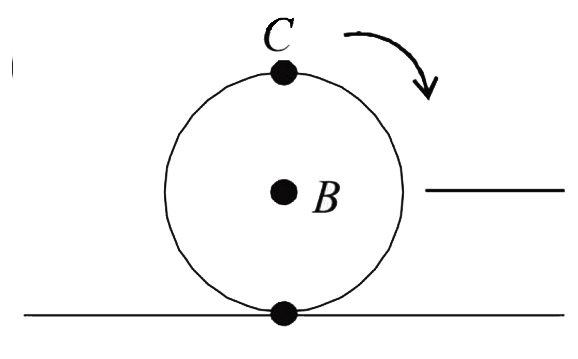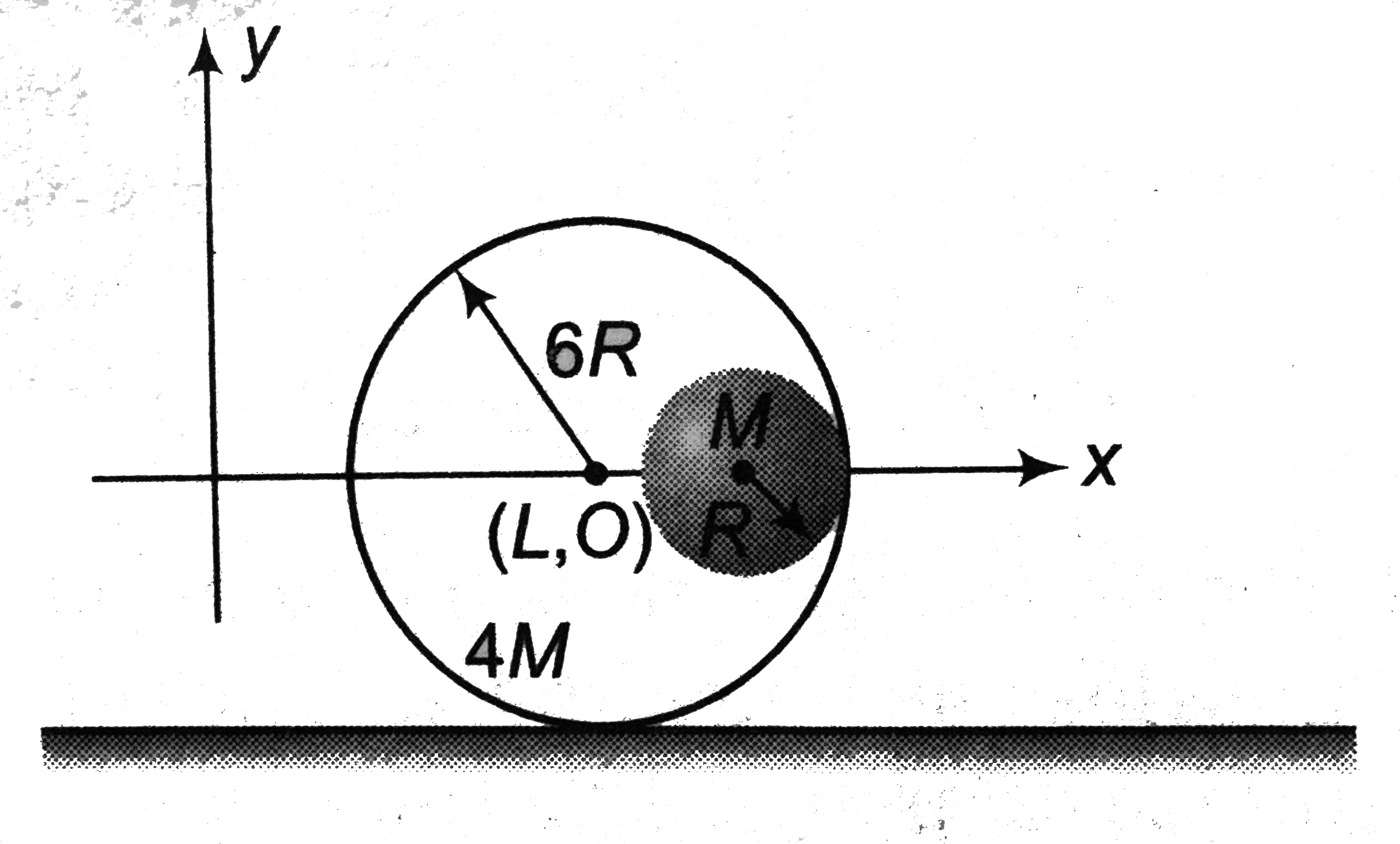Assertion : When a sphere is rolls on a horizontal table it slows down and eventually stops.
Reason : When the sphere rolls on the table, both the sphere and the surface deform near the contact. As a result, the normal force does not pass through the centre and provide an angular declaration.
Assertion is correct, reason is correct, reason is a correct explanation for assertion.
Assertion is correct, reason is correct, reason is not a correct explanation for assertion
Assertion is correct, reason is incorrect
Assertion is incorrect, reason is correct
The correct Answer is:B
To solve the problem, we need to analyze the assertion and the reason provided in the question.
Step 1: Understand the Assertion
The assertion states that "When a sphere rolls on a horizontal table, it slows down and eventually stops." This is true because when a sphere rolls, it experiences forces that cause it to decelerate.
Hint: Think about the forces acting on the sphere as it rolls on the surface.
Step 2: Analyze the Reason
The reason given is that "When the sphere rolls on the table, both the sphere and the surface deform near the contact. As a result, the normal force does not pass through the center and provide an angular deceleration." This statement is also true. When the sphere rolls, the contact point between the sphere and the table experiences deformation, which affects how forces act on the sphere.
Hint: Consider how the deformation at the contact point affects the normal force and torque.
Step 3: Relate Assertion and Reason
The reason explains why the sphere slows down and eventually stops. The deformation leads to a situation where the normal force does not act directly through the center of mass of the sphere, causing a torque that results in angular deceleration. This angular deceleration contributes to the sphere's slowing down.
Hint: Think about how torque affects the rotational motion of the sphere.
Step 4: Conclusion
Both the assertion and the reason are correct, and the reason provides a valid explanation for the assertion. Therefore, we conclude that the assertion is true, the reason is true, and the reason correctly explains the assertion.
Final Answer: Both the assertion and the reason are correct, and the reason is the correct explanation of the assertion.
The assertion states that "When a sphere rolls on a horizontal table, it slows down and eventually stops." This is true because when a sphere rolls, it experiences forces that cause it to decelerate.
The reason given is that "When the sphere rolls on the table, both the sphere and the surface deform near the contact. As a result, the normal force does not pass through the center and provide an angular deceleration." This statement is also true. When the sphere rolls, the contact point between the sphere and the table experiences deformation, which affects how forces act on the sphere.
The reason explains why the sphere slows down and eventually stops. The deformation leads to a situation where the normal force does not act directly through the center of mass of the sphere, causing a torque that results in angular deceleration. This angular deceleration contributes to the sphere's slowing down.
Both the assertion and the reason are correct, and the reason provides a valid explanation for the assertion. Therefore, we conclude that the assertion is true, the reason is true, and the reason correctly explains the assertion.
Similar Questions
A sphere is rolled on a rough horizontal surface. It gradually slows down and stops. The force of friction tries to
View SolutionWhen a sphere rolls down an inclined plane, then identity the correct statement related to the work done by friction force.
View SolutionA sphere is rolling without slipping on a fixed horizontal plane surface. In the figure, A is the point of contact, B is the centre of the sphere and C is its topmost point. Then

View SolutionAssertion : A solid sphere cannot roll without slipping on smooth horizontal surface
Reason : If the sphere is left free on smooth inclined surface. It cannot roll without slipping.
View SolutionA glass sphere has radius of 5.0cm and a refractive index of 1.6. A paperweight is constructed by slicing through the sphere on a plate that is 2.0cm from the centre of the sphere and perpendicular to radius of the sphere that passes through the centre of the circle formed by the intersection of the plane and the sphere. The paperweight is placed on a table and viewed from directly above an observer who is 8.0cm from the table top, as shown in figure. When viewed through the paperweight, how far away does the table top appear to the observer?
View SolutionA heavy solid sphere is thrown on a horizontal rough surface with initial velocity u without rolling. What will be its speed, when it starts pure rolling motion ?
View SolutionA thin hollow sphere of mass m is completely filled with non viscous liquid of mass m. When the sphere roll-on horizontal ground such that centre moves with velocity v, kinetic enerrgy of the system is equal to
View SolutionA small sphere of radius R is held against the inner surface of larger sphere of radius 6R (as shown in figure). The masses of large and small spheres are 4M and M respectively. This arrangement is placed on a horizontal table. There is no friction between any surfaces of contact. The small sphere is now released. Find the coordinates of the centre of the large spheres, when the smaller sphere reaches the other extreme position.

View SolutionA small sphere of radius R is held against the inner surface of larger sphere of radius 6R (as shown in figure). The masses of large and small spheres are 4M and M respectivley. This arrangement is placed on a horizontal table. There is no friction between any surfaces of contact. The small sphere is now released. Find the coordinates of the centre of the large spheres, when the smaller sphere reaches the other extreme position.

View SolutionA small sphere of radius R is held against the inner surface of a larger sphere of radius 6R. The mass of large and small spheres are 4M and M respectively. This arrangement is placed on a horizontal table. There is no friction between any surface of contact. The small sphere is now released. The x coordinate of the centre of the larger sphere when the smaller sphere reaches the other extreme position, is found to be (L+nR) , find n.
View Solution
